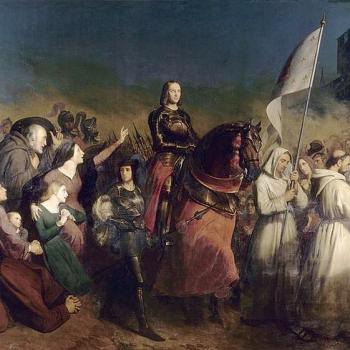The Sikh Tradition
A Small Celebration
James Ishmael Ford
There is one god,
named truth,
the creator,
without fear, without hate,
timeless in form,
beyond birth, self-existent,
(known by) the grace of the Guru.
It was today, the 13th of April, in 1699 that the Guru Gobind Singh created a formal initiation into the community of Sikh believers, the Khalsa.
The tradition’s founder was the Guru Nanak. Nanak was born in 1469 into a Hindu family in the Punjab. When he was thirty while bathing in a river, the Kali Bein, he vanished. Everyone feared he had been swept away and drowned. But on the fourth day he appeared in the village. By all accounts he seemed transformed. From this point on he was seen as somehow special, touched by the divine.
When first asked what had happened, he would only reply “There is no Hindu, there is no Muslim.”
For the rest of his life he preached about God as Ek Onkar, the one reality. During his life he visited what we would count as nine countries, offering his vision of divine love. Among his teachings he rejected caste and preached the equality of men and women. Before his death, despite the fact the guru was married and had two sons, he named a non relative as his successor. This led to some conflict, but the line of gurus continued.
The thirteen word verse that opens the Guru Granth Sahib is often called the Sikh creed.
It has numerous translations. But the first words naming the divine are perhaps crucial. It is sometimes translated as “There is one god.” But other common translations are “this Being is one,” and “One reality is.” Eleanor Nesbitt (whose translation leads this meditation), suggests that this shows “Guru Nanak’s mystical awareness of the one that is expressed through the many.” At its heart is this vision of God. From one angle is seen as monotheistic. From another pantheistic. And from another panentheistic.
There would be a succession of nine more gurus, until the tenth, Guru Gobind Singh. In addition to formalizing initiation into the community invested the authority of the Guru to that community and to a collection of hymns and prayers gathered as sacred scripture and called the Guru Granth Sahib.
The Sikh community’s formative years were hard and the community suffered persecution, not least for its attracting both Muslims and Hindus into a new faith. Two of the gurus would be murdered.
Scholars classify the tradition as an Indian Religion, but its not usually listed as a Dharmic tradition. In its formation most scholars see deep influences from the Hindu Sant tradition, and ecstatic mystical movement, whose most famous figure was the poet Kabir. And in its earlier years most Hindus saw it as a Hindu reform. But, there were substantial differences and before long it was seen as an independent spiritual stream, with influences from both Hinduism and Islam.
Today in North America Sikh’s are often mistaken for muslims, partially for the color of their skin and because orthodox Sikhs usually have beards and wear turbans. They have been the target of prejudice and sometimes violence. Infamously Sikh-American businessman Balbir Singh Sodhi was the first victim of American domestic retaliations following 9/11.
A brief overview of the Sikh tradition at the University of Cambridge site gives a very good summary of the faith.
“Sikhism is a progressive religion well ahead of its time when it was founded over 500 years ago, The Sikh religion today has a following of over 20 million people worldwide and is ranked as the 5th largest religion in the world. Sikhism preaches a message of devotion and remembrance of God at all times, truthful living, equality of mankind and denounces superstitions and blind rituals. Sikhism is open to all through the teachings of its 10 Gurus enshrined in the Sikh Holy Book and Living Guru, Sri Guru Granth Sahib.”
The number of Sikh’s is usually listed as more than 25 million adherents. The majority in India, and the majority of those in the Punjab.
Noting all this, there is today.
It is said on this day in 1699 the guru called the community together, drew a sword and asked for five Sikhs who would offer their heads for him. Five stepped forward. He gave them a taste of amrit, a nectar created by water infused with sugar and stirred with a doubled edged sword accompanied by the singing of hymns. They were given swords, steel bracelets, combs, special undershorts, and vowed to no longer cut their hair.
Today this rite is the central initiation into the Sikh community, the Khalsa.
May the line continue a blessing on the world…














